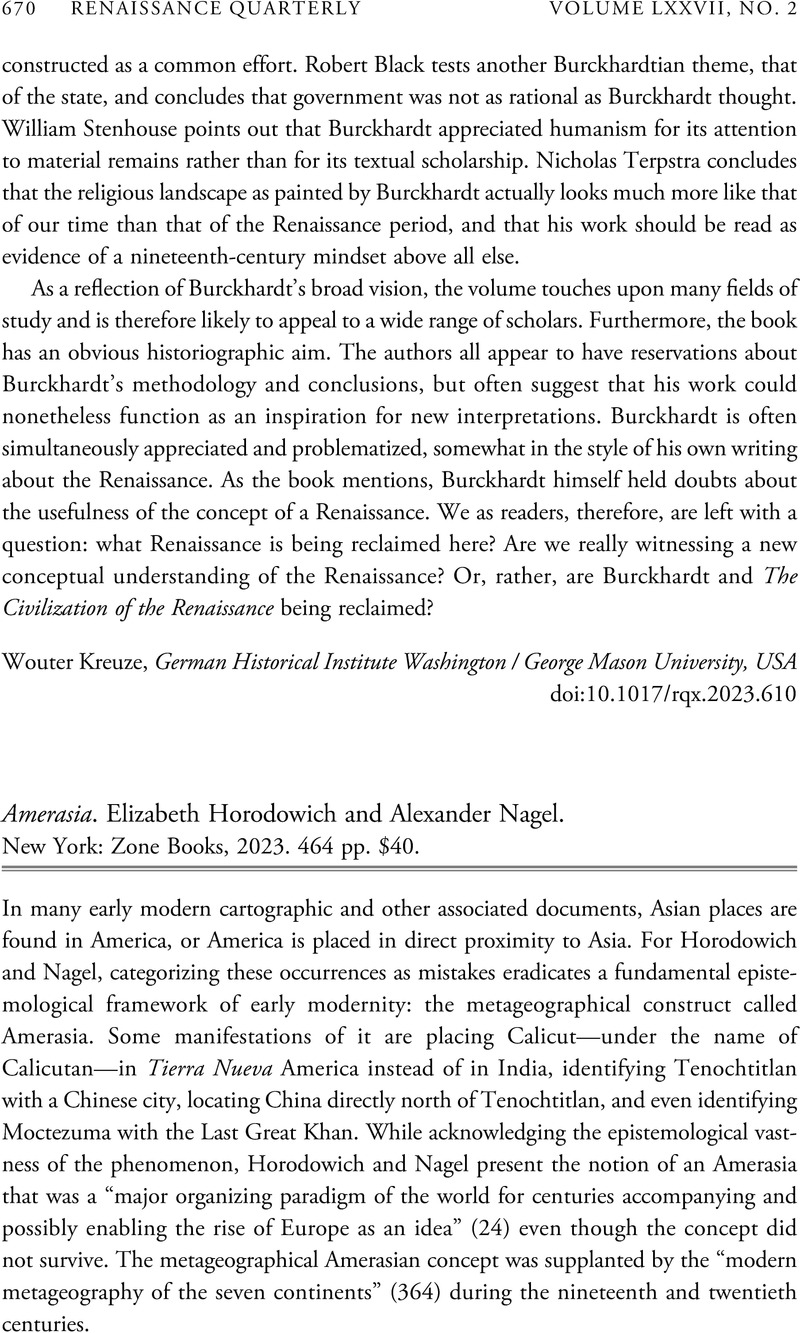No CrossRef data available.
Article contents
Amerasia. Elizabeth Horodowich and Alexander Nagel. New York: Zone Books, 2023. 464 pp. $40.
Review products
Amerasia. Elizabeth Horodowich and Alexander Nagel. New York: Zone Books, 2023. 464 pp. $40.
Published online by Cambridge University Press: 11 November 2024
Abstract
An abstract is not available for this content so a preview has been provided. Please use the Get access link above for information on how to access this content.

Information
- Type
- Review
- Information
- Copyright
- Copyright © The Author(s), 2024. Published by Cambridge University Press on behalf of Renaissance Society of America


